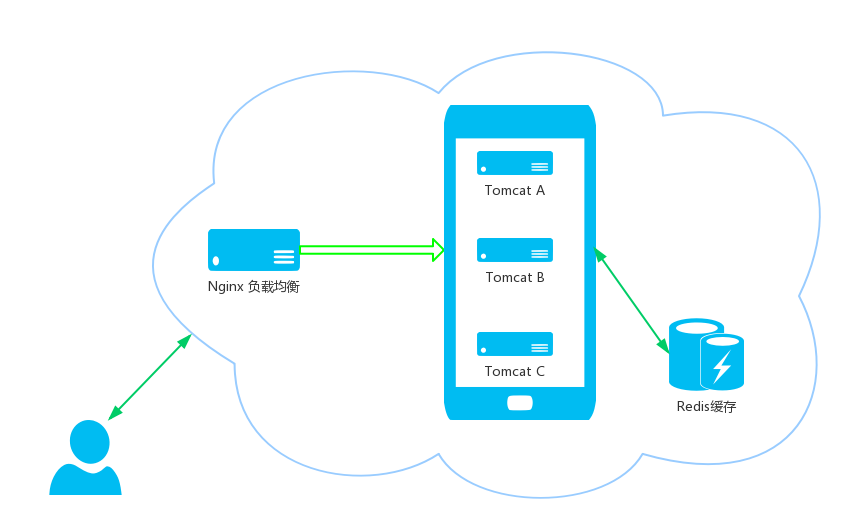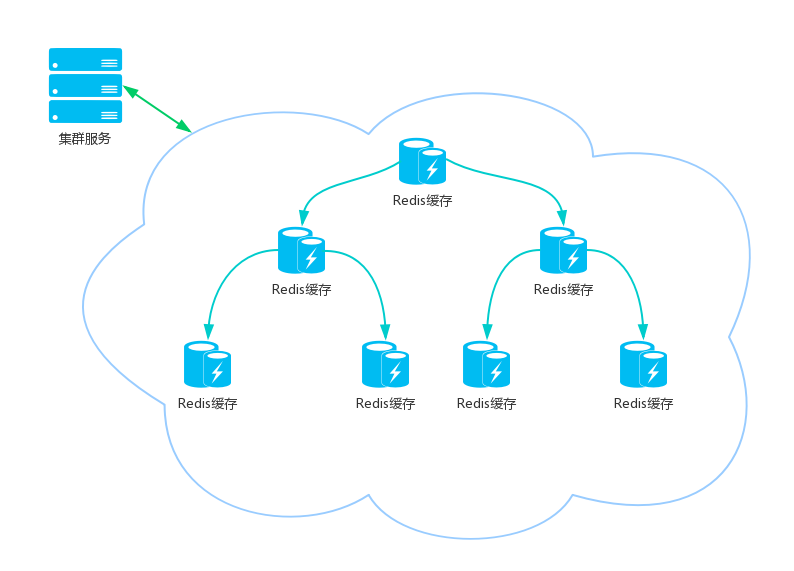写在开始
上一篇讲到使用Ehcache实现分布式缓存,尽管其直接操作JVM内存,速度快,效率高,但是缓存同步麻烦,分布式集群配置不方便,如果应用服务器重启会丢失缓存数据。
下面来分析一下Redis做系统session缓存实现。
Redis介绍
Redis是一个key-value存储系统。和Memcached类似, 它的出现,很大程度补偿了memcached这类key/value存储的不足,在部 分场合可以对关系数据库起到很好的补充作用。它支持存储的value类型相对更多,包括string(字符串)、list(链表)、set(集合)、zset(sorted set --有序集合)和hash(哈希类型)。
Redis还支持主从同步。数据可以从主服务器向任意数量的从服务器上同步,从服务器可以关联其他从服务器的主服务器。
Redis是通过socket访问到缓存服务,效率比ecache低,但比数据库要快很多,处理集群和分布式缓存方便,有成熟的方案。
Redis安装
https://blog.52itstyle.vip/archives/590/
项目架构
Spring MVC4 + Shiro-1.3.2 + Redis3.2.8
运行环境
Nginx + Tomcat7(3台) + JDK1.7
项目架构图


项目实现
Redis类库 jedis-2.9.0依赖commons-pool2-2.4.1
redis.properties配置:
#============================#
#===== redis sttings ====#
#============================#
redis.host=127.0.0.1
redis.port=6379
redis.password=123456
#单位秒
redis.expire=1800
redis.timeout=2000
redis.usepool=true
redis.database=1重写 AbstractSessionDAO 和 CacheManager
applicationContext-redis.xml配置:
<?xml version="1.0" encoding="UTF-8"?>
<beans xmlns="http://www.springframework.org/schema/beans"
xmlns:xsi="http://www.w3.org/2001/XMLSchema-instance" xmlns:context="http://www.springframework.org/schema/context"
xmlns:aop="http://www.springframework.org/schema/aop" xmlns:tx="http://www.springframework.org/schema/tx"
xsi:schemaLocation="http://www.springframework.org/schema/beans http://www.springframework.org/schema/beans/spring-beans-4.0.xsd
http://www.springframework.org/schema/aop http://www.springframework.org/schema/aop/spring-aop-4.0.xsd
http://www.springframework.org/schema/tx http://www.springframework.org/schema/tx/spring-tx-4.0.xsd
http://www.springframework.org/schema/context http://www.springframework.org/schema/context/spring-context-4.0.xsd">
<description>Shiro redisManager(集群环境下使用此配置,单点也可以使用)</description>
<!-- shiro redisManager -->
<bean id="redisManager" class="com.itstyle.web.common.redis.RedisManager">
<property name="host" value="${redis.host}" />
<property name="password" value="${redis.password}"/>
<property name="port" value="${redis.port}" />
<property name="expire" value="${redis.expire}" />
<property name="timeout" value="${redis.timeout}"/>
</bean>
<!-- redisSessionDAO -->
<bean id="sessionDAO" class="com.itstyle.web.common.redis.RedisSessionDAO">
<property name="redisManager" ref="redisManager" />
</bean>
<!-- cacheManager -->
<bean id="shiroCacheManager" class="com.itstyle.web.common.redis.RedisCacheManager">
<property name="redisManager" ref="redisManager" />
</bean>
</beans>**
声明:本文内容大体流程仅供参考,有些并未涉及到具体代码实现。**

